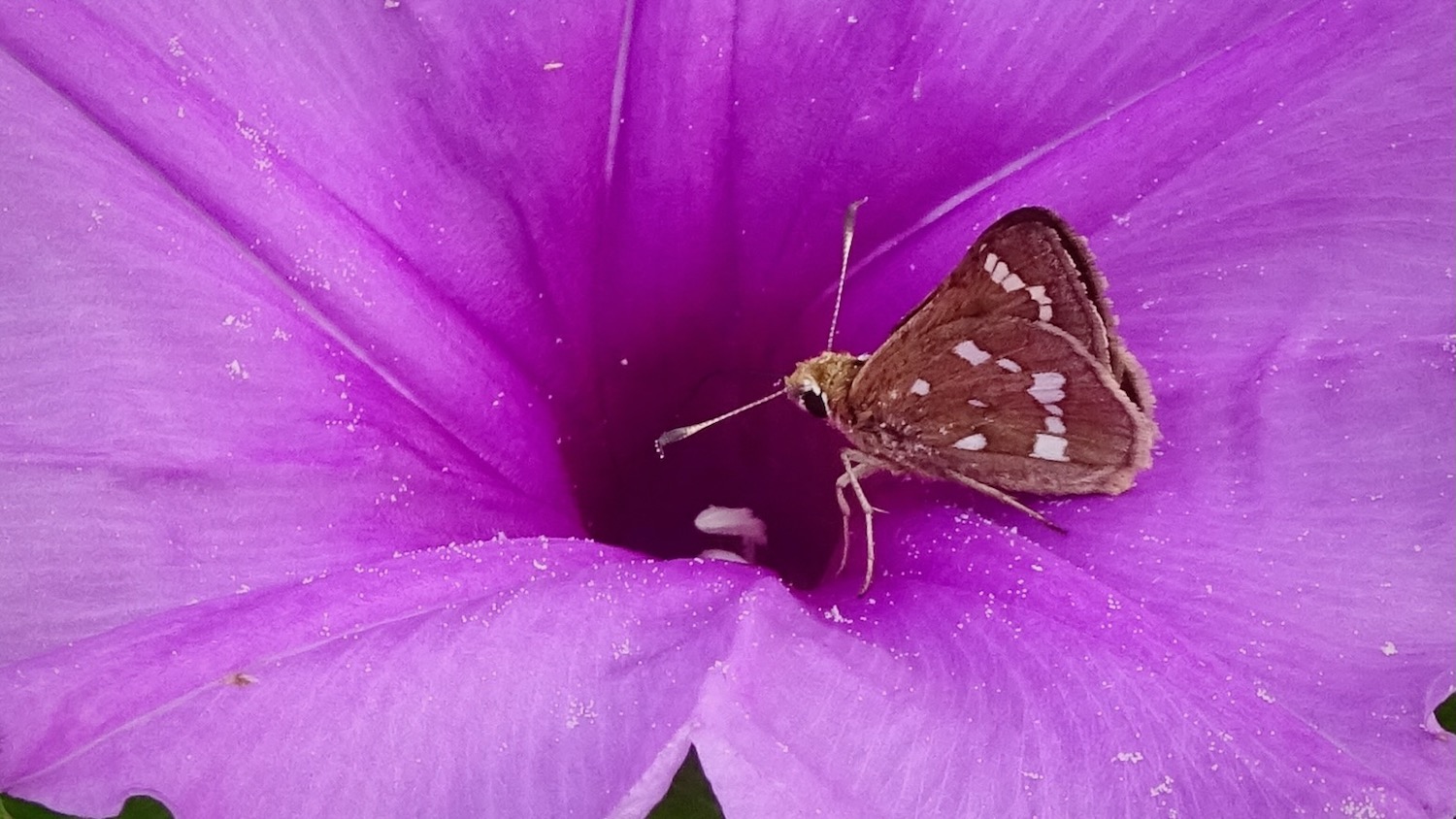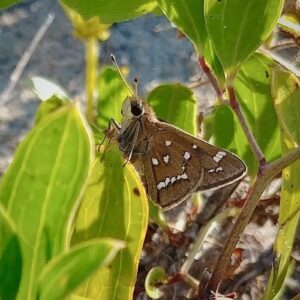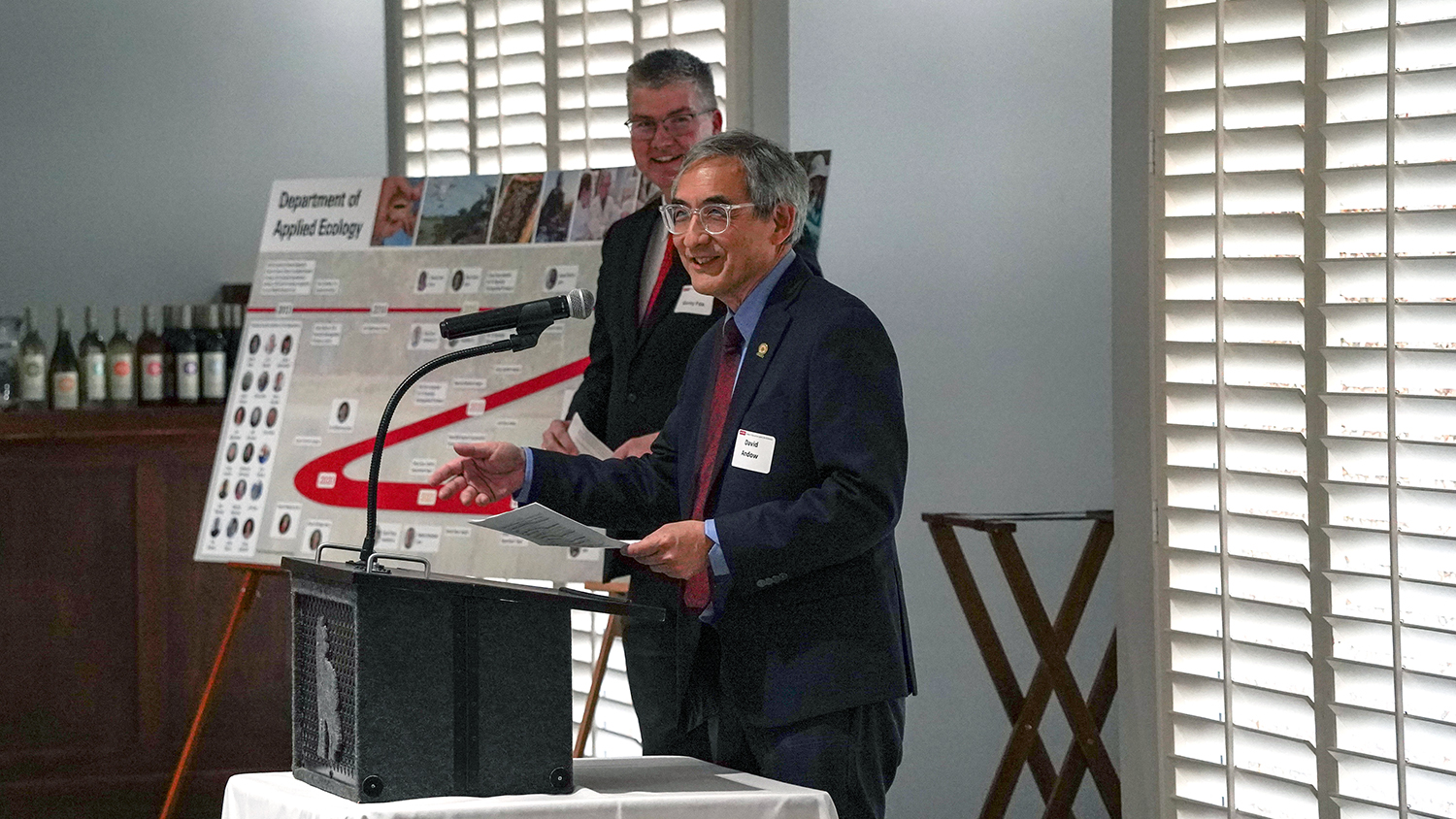Youngsteadt Awarded Grant to Conserve Rare Butterflies

Elsa Youngsteadt and her team are one of only six new projects funded by a partnership between the U.S. National Science Foundation (NSF) and the Paul G. Allen Family Foundation. These awards will combine scientific research and conservation activities to learn from and protect Earth’s biodiversity.

Elsa and her team will set out to study the rare, Crystal skipper butterfly. These small, brown butterflies are endemic to just 50km of barrier islands on the North Carolina coast. Although biologists have been aware of the species since the 1970s, it was formally named and described only in 2015—even as its tiny habitat is increasingly threatened by stronger storms, ongoing urbanization, and sea level rise. This project is a new collaboration between NCSU, the USGS, and NC Aquariums to guide Crystal skipper conservation by improving basic understanding of what limits skipper populations and which threats are most pressing.
“This butterfly epitomizes so much about coastal resilience here in North Carolina,” says Youngsteadt, an assistant professor of applied ecology and the NC State lead for the new project. “The same dunes that are a key part of the Crystal skipper’s habitat are also protecting humans and our activities farther inland. And although any one butterfly may not make the difference between a sustainable dune ecosystem and one that’s not, this particular species is our very own, native to North Carolina and nowhere else in the world. So I hope this project will help us really understand how to take care of it, as part of this larger coastal system.”
The national competition received broad interest, with a large number of submissions coming from researchers who had not previously submitted to NSF. The six projects will work to understand threats to biodiversity and conserve species across a diversity of environments.
“The breadth of biodiversity loss in the United States is reflected in the wide range of species covered in these six projects. While the approaches are different, each study addresses systemic issues that are much bigger than a singular species, and they leverage science and technology to accelerate conservation solutions,” said Lara Littlefield, Executive Director on behalf of the Paul G. Allen Family Foundation. “The increased number of new-to-NSF applicants also tells us that there is untapped potential for more collaboration between primary research and applied technology.”
In addition to their scientific and preservation work, the teams will work to engage policymakers, students, teachers, and the public on topics related to conservation. Several of these efforts will focus on underrepresented minorities, including a paid internship program for underrepresented minority students from throughout California’s Central Valley, training of Native Hawai’ians and Pacific Islanders in STEM integrated with indigenous research models, and recruitment of minority students from across North Carolina. Awardees will develop lesson plans for K-12 students, participate in after-school programs and summer camps, and host workshops for teachers. Broader public outreach will include social media, festivals and community meetings, museum and aquarium exhibits, interactive activities for children, and citizen science projects.
All awarded projects are:
- Fresno Chafee Zoo, UC Davis, and U.S. Bureau of Land Management to protect the endangered Blunt-nosed Leopard Lizard
- Bernice Pauah Bishop Museum; Pamona College; University of Hawaii, Manoa; and Hawaii Department of Land and Natural Resources, Division of Forestry and Wildlife to advance conservation for endangered Hawaiian land snails
- San Diego Zoo Wildlife Alliance and Iowa State University to study and enhance desert tortoises’ resilience to climate change
- University of Wisconsin, Madison; U.S. Fish and Wildlife Service; and U.S. Geological Survey, National Wildlife Health Center; to develop tools to mitigate White Nose Syndrome, a lethal fungal disease decimating several species of North American bats
- North Carolina State University and North Carolina Aquariums to conserve the Crystal skipper butterfly in a coastal urban environment
- Duke University, North Carolina State University, Nature Conservancy, and North Carolina Coastal Federation, and to incorporate secondary species in coastal restoration efforts to increase ecosystem regrowth
Learn more about the Partnership to Advance Conservation Science and Practice program and view the full list of awards by visiting nsf.gov.
Congratulations Elsa and team!
This post was originally published in Department of Applied Ecology.
- Categories:


